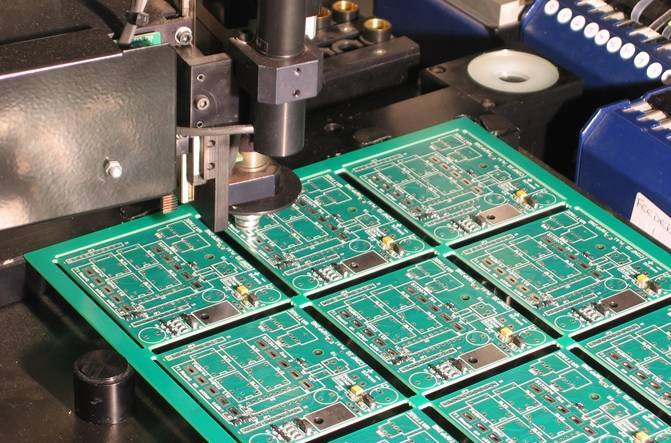About us
FASTPCBA Co.,Ltd
-
 Building 1, Senyang Electronic Technology Park, Guangming High-tech Park, Yutang Street, Guangming District, Shenzhen City.
Building 1, Senyang Electronic Technology Park, Guangming High-tech Park, Yutang Street, Guangming District, Shenzhen City.
-
 F:86-13418481618
F:86-13418481618
-
 pcba13@fastpcba.cn
pcba13@fastpcba.cn
 date:2019-08-14 11:39:13
date:2019-08-14 11:39:13
Turnkey pcb manufacturing technics parameters adjustment and influence
1, The angle of the scraper
The angle of the blade affects the vertical force of the blade to the solder paste. The smaller the angle is, the larger the the vertical direction force . The generated pressure changes along with the changing of blade angle during turnkey pcb manufacturing. If the blade angle is greater than 80°, the solder paste can only proceed as it is without rolling, and there is almost no force in the vertical direction, and the solder paste will not be pressed into the opening of the printing stencil. The optimum setting of the blade angle should be in the range of 45° to 60°, the solder paste has good rolling properties at the moment.

2, The speed of the scraper
During the turnkey pcb manufacturing, the speed of the scraper will improve the productivity. However, if the scraper speed is too fast, the scraper will pass through the stencil window for shorter time, which will prevent the solder paste from fully penetrating into the window, because it takes time for the solder paste to flow into the window. This can be clearly felt when printing a fine pitch QFP pattern. When the blade runs along the QFP side, the solder paste pattern on the pad perpendicular to the blade is fuller than the other side, and if the blade speed is too fast, Solder paste affects rolling and slides only on the printing stencil. Some printers have the function of rotating the blade by 45° to ensure uniformity of the four-sided solder paste during fine pitch QFP printing. The maximum printing speed should ensure that the QFP pad solder paste printing is uniform and full in the vertical and horizontal directions. Usually, when the blade speed is controlled at 20~40mm/s, the board brushing effect is better. Usually during turnkey pcb manufacturing, must pay attention to printing quality and efficiency simultaneously.
In addition, the speed of the blade is related to viscosity of the solder paste greatly. The slower the blade speed, the stronger the viscosity of the solder paste; similarly, the faster the scraping speed, the weaker the viscosity of the solder paste.
3, The pressure of the scraper
While the scraper is moving horizontally, the mechanism typically applies a vertical positive pressure to the blade device, commonly known as the printing pressure. During the turnkey pcb manufacturing if too small printing pressure causes the solder paste not clean, and too small vertical force of the blade, the solder paste can not be effectively deposited on the pad through the stencil, so that the amount of solder paste on the PCB pad is insufficient; If the printing pressure is excessive, it will cause the solder paste on the pad to be too thin, or even damage the stencil, which will lead to leakage at the back of stencil.
Usually we can use the following method to set the scraper pressure, apply a thin layer of solder paste on the surface of the stencil, firstly set the blade smaller pressure , and then slowly increase the pressure until it can scrape the solder paste completely from the stencil, which is the ideal scraper pressure.
4, Scraper width
If the scraper is too wide compared to the PCB, then more pressure is required and more solder paste is involved in its work, which can result in wasted solder paste. During turnkey pcb manufacturing, the width of the general scraper is the width of the PCB plus 50mm, and it is best to ensure that the blade head falls on the metal stencil.
5, Printing gap
The printing gap is the distance between the stencil and the printed circuit board. Usually, the PCB is kept at no distance from the stencil. Many printer machine also require the PCB to be slightly higher than the plane of the stencil. The adjusted metal stencil is slightly supported up, but the height of this support should not be too large, otherwise the stencil will be damaged. From the operation of the scraper, the scraper runs freely on the template. During turnkey pcb manufacturing that the solder paste is required to scrape away wherever the scraper is, leaving no extra Solder paste, while the scraper does not leave scratches on the stencil.
6, Separation speed
After the solder paste is printed, the instantaneous speed of the stencil leaving the PCB, that is, the separation speed, is a parameter related to the printing quality. During the turnkey pcb manufacturing, the window will take away some of the solder paste when the separation speed is too fast. The separation speed is too slow and the printing efficiency is lowered, so it’s necessary to find the proper separation speed.
7, Off-grid distance
The most suitable off-grid distance is determined by the physical properties of the solder paste, the tension of the stencil, the size of the opening portion of the stencil, and the like. Even if the off-grid distance is too large, there is no adverse effect on the printing performance, but the printing cycle becomes longer and the printing efficiency is lowered. On the other hand, if the off-grid distance of the turnkey pcb manufacturing is short, the printing will proceed to the next action before the completion of the off-grid, which may result in a change in the filling amount and the filling shape (mainly causing less welding and lack of welding).
 Building 1, Senyang Electronic Technology Park, Guangming High-tech Park, Yutang Street, Guangming District, Shenzhen City.
Building 1, Senyang Electronic Technology Park, Guangming High-tech Park, Yutang Street, Guangming District, Shenzhen City.
 F:86-13418481618
F:86-13418481618
 pcba13@fastpcba.cn
pcba13@fastpcba.cn